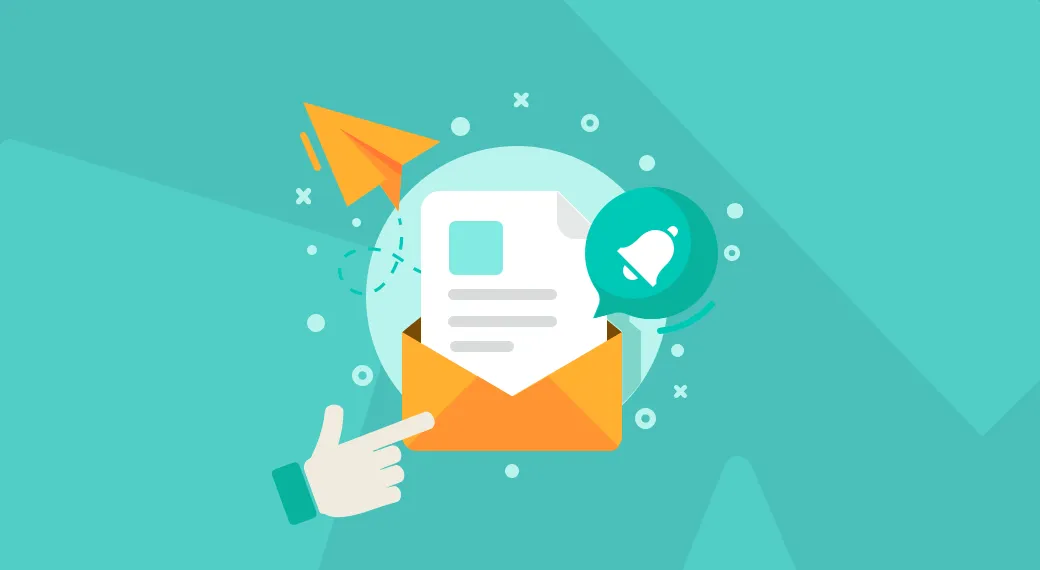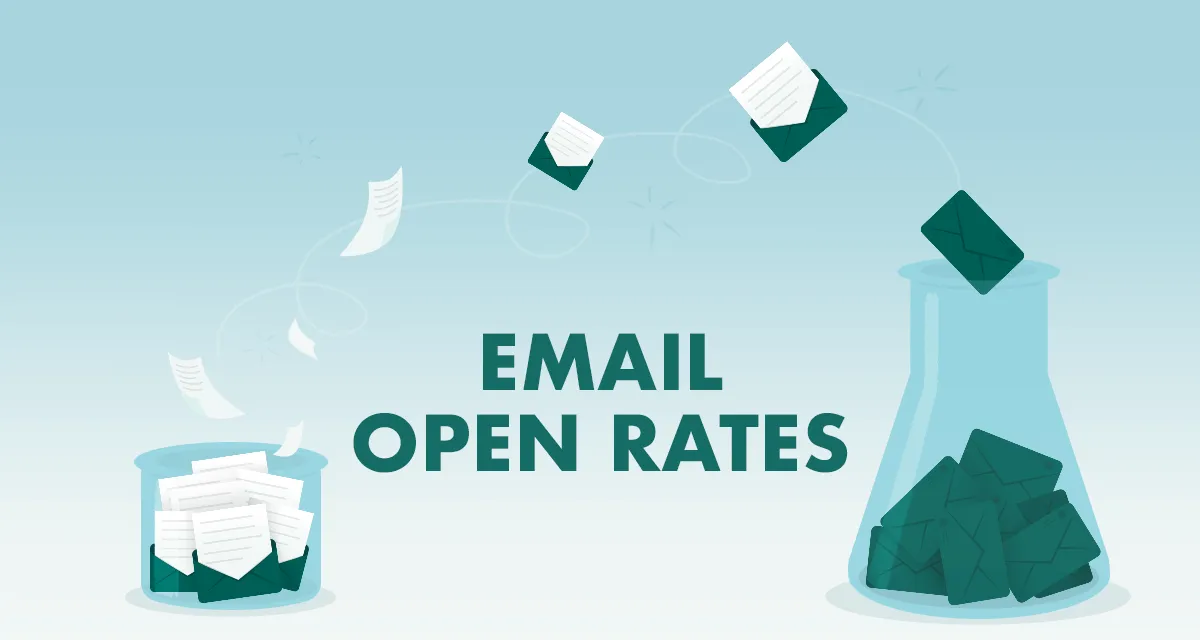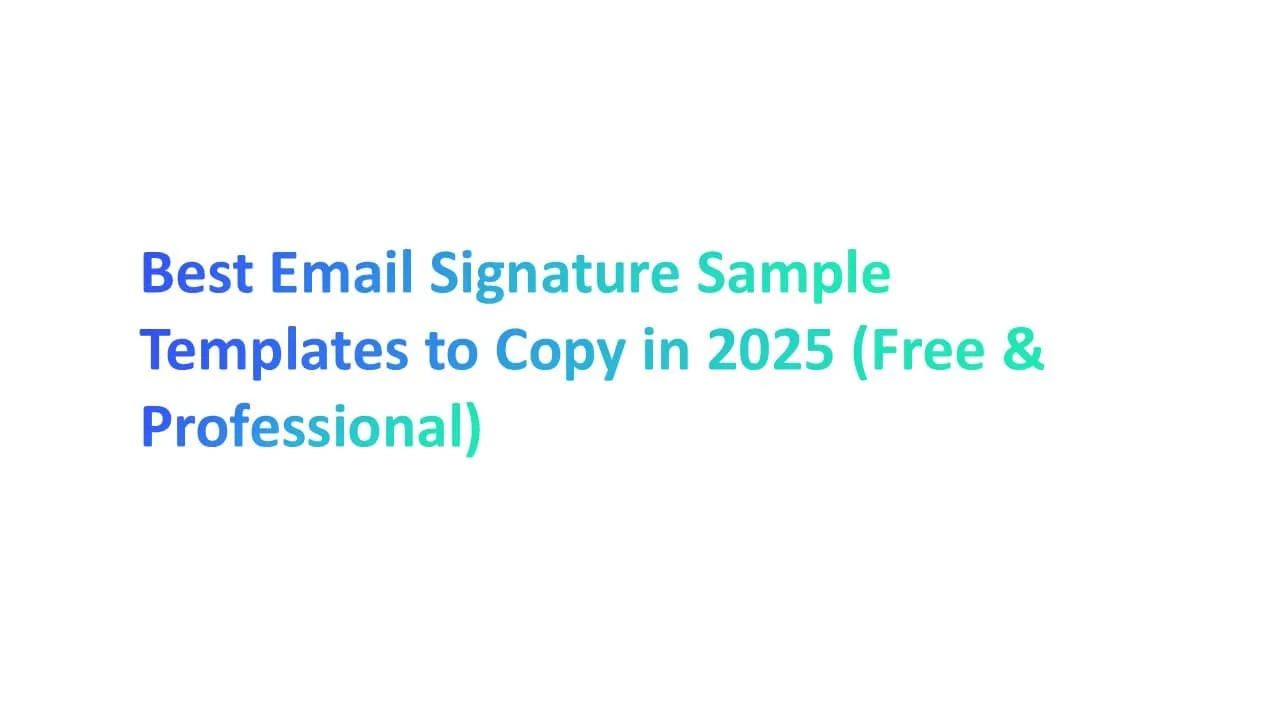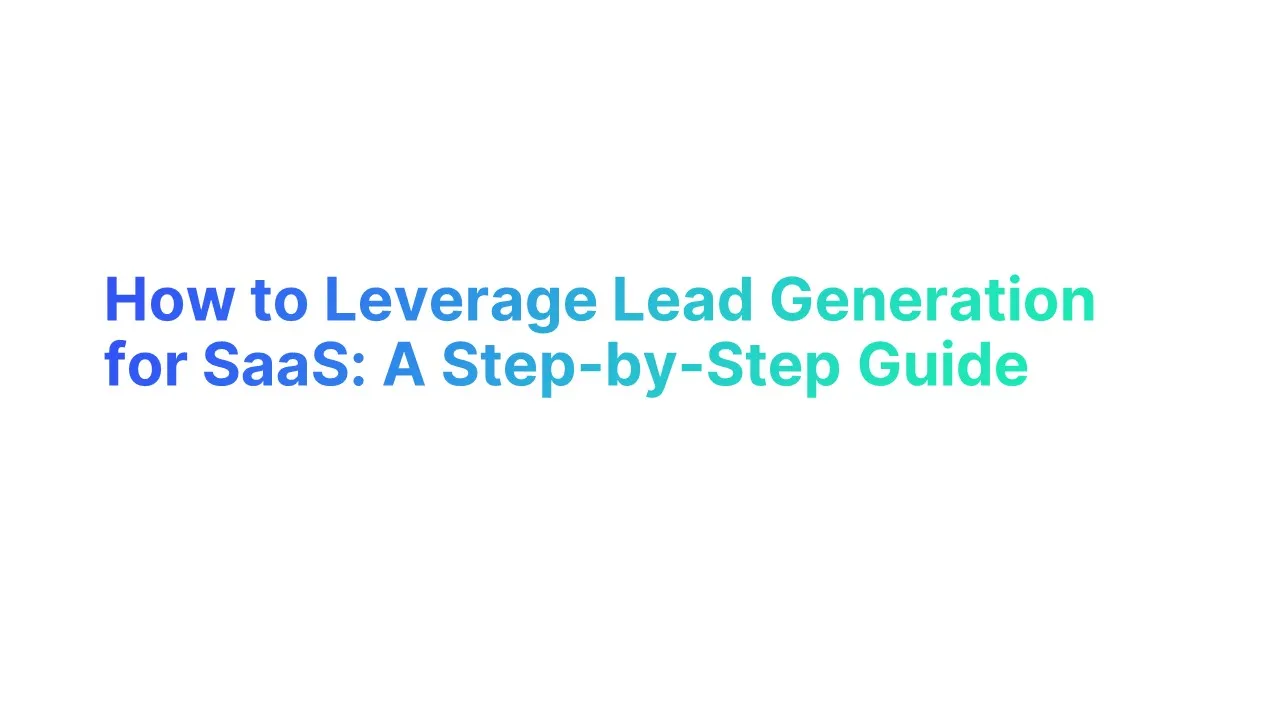Ever feel like your emails vanish into a digital black hole? You’re not alone. According to the Data & Marketing Association, email marketing can yield a 42:1 return on investment—if you do it right.
That’s why we’re diving into the ins and outs of boosting your email open rates and ensuring every message makes a real impact. In this guide, you’ll discover proven tactics to captivate your subscribers, increase engagement, and accomplish your business goals.
Starting now, let’s roll up our sleeves, explore the numbers, and craft an email strategy you (and your subscribers) can’t wait to see in action.
What Is a Good Email Open Rate?

If you’re sending emails and getting open rates below 20%, something’s likely off. So what’s a good email open rate? Well, it depends on a few things—like your industry, your email list, and the type of email you’re sending. But let’s start simple.
👉 The average email open rate across industries is between 21% and 28%, according to Campaign Monitor. For nonprofits, it’s a bit higher. For government or education, it might go even beyond 30%. But if you’re in retail or fitness, the average is closer to 18% to 22%.
Now, here’s the thing: most email marketers aim for at least 25%. That’s considered a good email open rate. If you're hitting 30% or more, you're doing better than most email service providers report.
Why It Matters
Your open rate shows how many recipients opened the email out of the total number of emails sent. It's a good indicator of how well your subject line, timing, and list quality are working.
And a higher open rate often leads to a better click through rate and conversion rate—which means more sales or signups.
How to Calculate Open Rate?

To understand how well your emails are performing, you need to measure the email open rate accurately. This metric helps you track how many recipients are actually opening your emails instead of ignoring them.
“Struggling with inbox placement? Switch to Alore's Warm-Up Engine and watch your open rates climb—no manual setup required.”
While most email service providers calculate this automatically, knowing the formula allows you to analyze your data more effectively and make informed decisions.
Email Open Rate=(Total Opened Emails / Total Delivered Emails)×100
Example Calculation:
- Total Emails Sent: 1,000
- Bounced Emails: 50
- Total Delivered Emails: 1,000 - 50 = 950
- Total Opened Emails: 200
So, the Email Open Rate =(200/950)×100=21.05%
This number gives a quick overview of how many people are engaging with your emails.
However, to get a clearer picture of performance, it’s also essential to track other email marketing benchmarks like click-through rate and bounce rate for deeper insights.
“Struggling with low email open rates? Try Alore’s AI-driven warm-up campaigns and improve email deliverability effortlessly!"
7 Reasons Your Email Open Rate Is So Low

1. Your Subject Line Isn’t Compelling Enough
The subject line is the first thing your reader sees. If it doesn’t grab their attention, they won’t open the email—no matter how good your content is.
What makes a subject line weak?
- It’s too long or confusing
- It sounds like spam
- It’s boring or too generic (like “Monthly Newsletter”)
Fix it with these tips:
- Keep it short—under 9 words works best.
- Personalize it. Use the subscriber’s name or location if possible.
- Add a little curiosity. (Example: “Are you making this email mistake?”)
- Try A/B testing subject lines to see which gets a higher open rate.
“Tired of guessing what works? Let Alore’s A/B testing and real-time analytics help you win more clicks.”
2. You’re Sending at the Wrong Time
Even great emails won’t work if they land at the wrong time. Timing has a direct impact on your email performance.
Here’s what can go wrong:
- You send during off-hours (like late night)
- You hit inboxes when people are busy
- You don’t consider time zones or work schedules
🕒 Tips to get your timing right:
- Send emails on Tuesdays, Wednesdays, or Thursdays between 9–11 AM, based on data from multiple email marketing benchmarks
- Use features like “send time optimization” in your email service provider
- Use triggered emails that send based on user actions (like sign-ups or cart abandonment)
- Look at your past campaign data to track when people opened the email or clicked
According to Litmus, emails sent at optimal times see up to 20% higher open rates
3. Your Sender Name Looks Unfamiliar or Untrustworthy

Would you open an email from someone you don’t recognize? Probably not. Your sender name plays a big role in your email open rates. People judge in seconds whether an email feels legit—or spammy.
When your name looks odd, anonymous, or too corporate, it can kill trust.
Here’s why this happens:
- You’re using a generic sender like “noreply@company.com”
- Your name doesn’t match your brand or past emails
- It feels robotic or inconsistent (e.g., switching between “Team,” “Marketing,” or “Updates”)
How to fix it:
- Always use a clear, recognizable name your audience expects
- Combine a real name + brand (e.g., Jamie from BrightBooks)
- Be consistent across all your email campaigns
- Avoid technical-looking senders that seem automated
Pro tip: Test your email open rate with different sender name formats. Most email service providers allow A/B testing to see which gets more clicks.
4. Your Email List Is Cold or Outdated
Let’s say you haven’t emailed someone in months—or years. They may not remember signing up. Or they’ve changed jobs. Or worse, they’ve never opened a single email from you.
This is what marketers call a cold email list, and it’s a major reason for poor open rate performance.
Here’s what goes wrong:
- Many contacts are inactive or never opened the email
- Emails bounce or go to spam folders
- Your open rate drops, and so does deliverability
How to warm up your list again:
- Segment your list by email performance (e.g., last open date, last click)
- Run a re-engagement campaign: Ask if they still want to hear from you
- Remove inactive contacts after 60–90 days of no activity
- Make sure your content includes at least one link and a clear call to action
“Don’t let a cold list drag you down—Alore's auto warm-up and reply tracking can revive your email game.”
5. You're Not Segmenting Your Audience
When you send the same message to everyone, it rarely works. People are different. If your emails feel too general or irrelevant, many recipients won’t even bother opening them.
This is where audience segmentation comes in. It’s simply the practice of dividing your email list into smaller groups—based on behavior, interest, or location. And yes, it’s one of the fastest ways to improve your email open rates.
What happens when you don’t segment:
- Your email content feels “off” or irrelevant to the reader
- You send too many emails to people who don’t need them
- Open rate and click through rate both drop
- You risk higher bounce rates and unsubscribe rates
How segmentation improves open rates:
- Tailors the message to the right people at the right time
- Helps deliver more relevant campaigns with better performance
- Keeps your subscribers engaged by sending what they expect
Tips to segment better:
- Start with basic tags like “new subscriber,” “past customer,” or “location”
- Use data from previous email marketing campaigns—like who clicked, who opened the email, or who ignored it
- Create groups based on purchase behavior, interests, or engagement level
- Send triggered emails based on actions (like signing up or downloading something)
6. Your Preheader Text Is Wasted or Missing

The preheader text is the line of text that appears next to or below your subject line in most inboxes. If you don’t customize this, most email apps will just pull random text from your email—usually something like “View in browser.”
That’s a missed opportunity.
Why a weak preheader hurts you:
- Readers see dull or irrelevant text
- The message looks incomplete or unprofessional
- You lose a key moment to boost your open rate
Why using it well boosts open rates:
- It supports your subject line with added value or curiosity
- It gives context for what’s inside the email
- It helps your email stand out in crowded inboxes—especially in different industries like fitness, non profits, or healthcare
How to write better preheader text:
- Make it a second hook: If your subject line is the headline, this is the subheadline
- Keep it under 100 characters
- Match your call to action (e.g., “See what’s inside” or “Your exclusive tips await”)
- Test different variations to improve your email performance
7. Your Emails Are Landing in Spam or Promotions Folder
If your emails aren’t even reaching the inbox, there’s no way they’ll get opened. That’s a big reason your email open rate might be low.
And yes—it’s more common than you think. According to Mailmodo, around 21% of marketing emails end up in spam or promotions folders.
Why this happens:
- You’re using too many spam-trigger words (like “FREE,” “Buy now,” “Urgent”)
- You’ve sent too many emails to inactive recipients
- Your email list includes old or invalid contacts
- Your email lacks proper setup (missing SPF, DKIM, or DMARC)
- You're not using a verified sender domain
How to fix it:
- Clean your email list often—remove contacts who never opened the email
- Avoid using misleading subject lines or all caps
- Use a reputable email service provider that follows authentication best practices
- Include at least one link that’s safe and relevant
- Make sure people can unsubscribe easily (it’s a trust signal)
The Metrics That Matter: CTR, CTOR, and More

1. Click-Through Rate (CTR)
CTR shows how many people clicked a link inside your email out of the total number of recipients you sent it to.
Why it matters:
You might have a high open rate, but if no one clicks, your email content or call to action may not be strong. A low CTR means your readers opened the email but didn’t find the content valu
How to calculate it: CTR = (Number of Clicks/ Number of Emails Sent)×100
Quick Tips to Improve CTR:
- Add at least one link that clearly stands out.
- Use strong, simple CTAs like “Get My Offer” or “Watch the Demo.”
- Keep the email content focused and relevant.
- Personalize the email using names or previous behavior.
- Make your emails mobile-friendly—over 60% of opens happen on phones.
2. Click-to-Open Rate (CTOR)
CTOR measures how many people clicked a link after they opened the email, not just received it.
Why it matters:
This helps you measure how engaging your email content is once opened. Even with a strong subject line and high email open rate, poor CTOR means your content isn’t clicking (literally).
How to calculate it: CTOR = (Number of Clicks/ Number of Opens)×100
Tips to Improve CTOR:
- Match the content to the subject line. No clickbait.
- Break text into short chunks with headers or bullet points.
- Use visuals like buttons or images that prompt clicks.
- Test different layouts and email designs to see what works.
3. Bounce Rate

A bounce happens when your email doesn’t even reach someone's inbox. Instead, it “bounces” back.
There are two types:
- Soft bounce: The inbox is full or the server is busy.
- Hard bounce: The email address is fake or doesn’t exist.
Why it matters:
A high bounce rate means your email list is not healthy. And if too many emails bounce, it can hurt your email performance. Internet service providers may start marking your campaigns as spam. That can hurt your open rate too.
How to calculate bounce rate: Take the number of bounced emails, divide it by the total emails sent, and multiply by 100.
Formula: (Bounced Emails / Emails Sent) × 100 = Bounce Rate %
Example: If you send 1,000 emails and 50 bounce, your bounce rate is 5%.
Tips to lower it:
- Clean your email list often.
- Use tools to verify emails before you send.
- Avoid using spammy language in your email content.
4. Unsubscribe Rate
This shows how many people clicked "unsubscribe" after opening your email.
Why it matters:
It tells you if people like what you're sending. If your unsubscribe rate goes up, your email content might not match your audience’s needs. This can hurt your engagement and lower your email open rates over time.
How to calculate unsubscribe rate: Take the number of unsubscribes, divide it by the total number of emails delivered, and multiply by 100.
Formula: (Unsubscribes / Emails Delivered) × 100 = Unsubscribe Rate %
Example: Let’s say you delivered 2,000 emails and 40 people unsubscribed. Your unsubscribe rate is 2%.
How to reduce unsubscribes:
- Send content your audience actually cares about.
- Let people choose what kind of emails they want.
- Don’t email too often—or too little. Keep a consistent schedule.
5. Spam Complaint Rate
Spam complaint rate tells you how often people mark your emails as spam. When users hit “Report Spam,” it signals that your content was either unwanted or unexpected.
This directly affects your email open rates. A high spam complaint rate damages your sender reputation. That means fewer of your emails land in inboxes, and more go straight to spam folders.
How to calculate it:
Use this simple formula:
Spam Complaint Rate = (Number of Spam Complaints ÷ Number of Emails Sent) × 100
How to lower it
- Use a clear sender name that people recognize.
- Only email subscribers who opted in.
- Avoid tricky subject lines or clickbait.
- Make the unsubscribe option visible and easy to use.
Strategies to Improve Your Email Open Rates

1. Use Curiosity-Driven Subject Lines
Your subject line is the first thing people see. If it's boring, they won't open the email. But if it sparks curiosity, they’ll want to find out more.
What to do:
- Ask a question. For example: "Did you miss this one change?"
- Use a cliffhanger. For example: "Your account might be at risk..."
- Keep it short and punchy. Under 50 characters is ideal.
Why it matters: Subject lines play a huge role in email open rates. In fact, studies show that 64% of people decide to open emails based on subject lines alone.
How to implement it:
- A/B test your subject lines.
- Look at past campaigns with high open rates.
- Try different styles—questions, numbers, surprises.
Tracking the right email marketing metrics will show which subject lines work. This helps you write better ones over time.
2. Personalize Beyond the First Name
Everyone uses the first name. It's time to do more. People open emails when they feel the message is just for them.
What to do:
- Mention a recent product they viewed.
- Use their location to share relevant deals.
- Talk about their last interaction with your brand.
Why it matters: Personalized emails see higher open rates and better engagement. According to Statista, emails with advanced personalization get 20% more opens.
How to implement it:
- Use dynamic content blocks inside your email tool.
- Segment your email list by interests or behavior.
- Use past email performance data to guide personalization.
Tracking open rate, click rate, and email content helps improve how you connect with your recipients. The more personal it feels, the better your results.
3. Test Emojis—But Only If They Match Your Brand

Emojis can make your subject line stand out. They add color, emotion, and sometimes a bit of fun. For example, a subject line like “Ready for your 🌟 offer?” may catch more eyes in a crowded inbox.
Why it’s important:
Studies show that emojis can lift open rates by up to 56%—but only when used right. If your email marketing is professional or B2B, emojis might hurt your credibility.
If you’re a fashion brand or a fun DTC company, emojis could help increase engagement and improve email performance.
How to implement it:
- Test subject lines with and without emojis.
- Use A/B testing across different campaigns.
- Make sure emojis fit your audience and brand tone.
- Avoid overusing them—too many emojis can look spammy.
4. Send From a Consistent Domain and IP
If your emails come from different domains or IPs, your recipients might get confused—or worse, your emails may land in the spam folder.
Why it’s important:
Consistency builds trust. When people receive your emails from the same sender every time, it improves email open rates. It also helps with domain reputation, a key factor most email service providers consider when sorting emails.
How to implement it:
- Stick to one verified domain like news@yourbrand.com.
- Don’t change your IP unless needed.
- Set up proper email authentication: SPF, DKIM, and DMARC.
- Monitor your bounce rate and complaint rate regularly.
5. A/B Test Subject Lines at Least Twice a Month

A/B testing means sending two versions of the same email with different subject lines to see which one performs better. One group gets version A, the other gets version B.
Why it’s important:
Subject lines are the first thing your readers see. If the subject line isn’t strong, your email won’t get opened—no matter how good your content is. A simple change like adding an emoji, a number, or a question can raise your open rate fast.
How to implement:
- Pick two different subject lines for the same email.
- Send each to a small group of your subscribers.
- Use your email service provider to track which one had a better email open rate.
- Use the winning line for the rest of your list.
6. Prune Inactive Subscribers
This means removing people who haven’t opened your emails in a long time. These recipients might not be interested anymore.
Why it’s important:
Keeping inactive people in your email list hurts your email open rates. Fewer opens = lower performance. It also affects how your emails are treated by most email service providers—they might send you to the spam folder.
How to implement:
- Use your ESP to find people who haven’t opened the email in the last 90 days.
- Send a final “Are you still interested?” email.
- If they don’t respond, remove them.
Cleaning your list means your emails reach people who care. That leads to higher open rates, better email performance, and happier readers.
If your email open rates are low, timing may be the problem. When you send emails, how often you send them, and how you plan your campaigns all matter a lot.
What Is Send Time?
Send time means the hour or day your emails go out. Sending emails when your audience is busy or sleeping can hurt performance. Most email service providers suggest sending in the morning on weekdays.
Why Frequency Matters
If you send too many emails, people may unsubscribe. Too few, and they forget who you are. Finding the right frequency can improve open rate and lower your bounce rate. For example, HubSpot recommends 1–2 emails per week for most email campaigns.
Track how your subscribers respond. If open rates go down or complaints rise, it may be time to adjust. Keep your list healthy by removing inactive contacts. This also boosts your email performance and ensures a good email open rate.
Why a Campaign Schedule Helps
A schedule helps you stay organized and consistent. It also shows subscribers when to expect your emails. Use a content calendar to plan your campaigns. Make sure each message has a purpose, a strong subject line, and at least one link or call to action.
Is Your ESP Holding You Back? What Most Email Marketers Overlook

Your email service provider (ESP) can quietly affect your email open rates. Many email marketers don’t realize how much the platform matters. If your emails take too long to send, land in spam, or don’t display well, you’ll lose readers fast.
What should you look for in a good ESP?
- A strong sender reputation and stable IP.
- High deliverability across different industries.
- Tools to A/B test subject lines, automate campaigns, and track open rate performance.
According to Campaign Monitor, “companies using top-tier ESPs see 20% higher open rates on average.” That’s not small. It can make or break your campaign.
And don’t just go with the most email service providers people talk about. Do your research. Compare features. Test what fits your audience.
Also, check how your email content shows up in inboxes. Bad formatting kills engagement. A clean design, fast load time, and at least one link can lead to better click-through rates and lower bounce rates.
FAQs

Understanding email benchmarks can help improve your email marketing performance and engagement. Here are answers to some of the most common questions about email open rates and tracking.
1. What Factors Affect Email Open Rates?
Several factors influence whether an email gets opened. Subject lines, sender reputation, and email timing all play a role in engagement.
Key Influencing Factors:
- Relevance: Emails that match audience interests get higher open rates.
- Sender Name: Recognizable and trusted names increase engagement.
- Email Timing: Emails sent when recipients are most active perform better.
- Inbox Placement: Emails landing in spam folders are rarely opened.
- Preheader Text: A well-crafted preview text encourages opens.
2. How Often Should I Check My Email Open Rates?
Tracking open rates too frequently can lead to unnecessary changes, while checking too infrequently may cause missed opportunities for improvement.
Recommended Frequency:
- Weekly: Best for active campaigns needing quick adjustments.
- Monthly: Good for evaluating trends and long-term performance.
- Quarterly: Helps assess the impact of larger strategy shifts.
Analyzing trends over time gives a clearer picture of what works instead of reacting to short-term fluctuations.
3. Do Open Rates Vary by Industry?
Yes, different industries have different benchmarks based on audience behavior.
Examples of Open Rate Differences:
- Government and Nonprofits typically have higher open rates due to important updates.
- Retail and eCommerce may experience lower open rates due to frequent promotions.
- B2B emails often have moderate open rates, depending on industry relevance.
Comparing your open rates to your specific industry benchmark is more meaningful than comparing to general averages.
4. What Is a Bad Open Rate?
A “bad” open rate depends on industry averages and email purpose. However, if your open rate falls below 15%, it may indicate a problem.
Possible Causes of Low Open Rates:
- Weak subject lines that fail to capture interest.
- Emails sent at the wrong time, reducing visibility.
- Outdated or disengaged email lists affecting engagement.
- Inbox placement issues, causing emails to land in spam.
Improving email content, timing, and segmentation can help increase open rates.
5. Can Email Open Rates Be Misleading?
Yes, open rates don’t always tell the full story. A high open rate does not always mean an email was engaging or successful.
Why Open Rates Can Be Misleading:
- Email previews count as opens, even if the recipient never reads the email.
- Some email clients block tracking pixels, leading to underreported opens.
- High open rates with low click-through rates may indicate weak content.
Open rates should be analyzed alongside other metrics like click rates and conversions for a complete picture.
6. How Do Privacy Updates Affect Open Rate Tracking?
Privacy updates, like Apple’s Mail Privacy Protection (MPP), have made open rate tracking less accurate by preventing senders from knowing when an email is opened.
How It Impacts Tracking:
- Emails may appear “opened” even if they weren’t.
- Geolocation data is limited, affecting regional insights.
- A/B testing based on open rates is less reliable.
Focusing on engagement metrics like click-through rates and conversions is becoming more important as privacy changes continue.
7. What’s the Difference Between Unique and Total Opens?
Understanding unique and total opens helps interpret email performance correctly.
Key Differences:
- Unique Opens: The number of distinct individuals who opened the email.
- Total Opens: The total number of times the email was opened (including multiple opens by the same recipient).
A high total open count with low unique opens suggests some recipients are revisiting emails, while a high unique open count with low total opens suggests most readers only opened once.
8. How Do Bots and Spam Filters Impact Open Rates?
Automated systems can inflate open rates, making email engagement seem higher than it actually is.
How Bots & Filters Affect Open Rates:
- Spam filters "pre-open" some emails to check for malicious content.
- Security software auto-loads tracking pixels, making some emails appear opened when they weren’t.
- Bot-generated activity can distort real engagement data.
To reduce false open rates, focus on real engagement metrics like clicks and replies instead.
9. Should I Focus on Open Rate or Other Metrics?
Open rates are useful but should not be the only metric tracked.
More Reliable Engagement Metrics:
- Click-through rate (CTR): Measures active engagement.
- Reply rate: Shows audience interaction.
- Conversion rate: The most direct measure of success.
A high open rate with low engagement suggests the subject line worked but the content didn’t. A low open rate with high click-throughs may indicate a strong audience connection but poor subject line performance.
10. How Long Should I Wait Before Resending an Unopened Email?
Resending unopened emails can increase engagement if done correctly, but waiting too long or too little can hurt deliverability.
Best Practices for Resending Emails:
- Wait at least 48-72 hours before resending.
- Change the subject line slightly to attract attention.
- Only resend to non-openers, not the entire list.
- Don’t resend too often, as repeated emails may cause unsubscribes.
Testing different send times and subject lines before resending can improve success rates.
Conclusion
If your email open rates are stuck below 20%, it's time to take action. From crafting better subject lines to cleaning up your email list and picking the right ESP, every small fix adds up. Remember, a strong email strategy isn't just about sending—it’s about sending smart. Start testing, tracking, and optimizing today to reach more inboxes, boost engagement, and hit your business goals.
“Maximize your email outreach with Alore’s drip campaigns, automate follow-ups, track responses, and improve engagement effortlessly!"

.webp)






